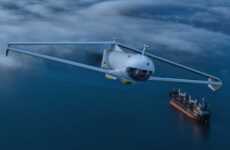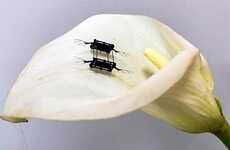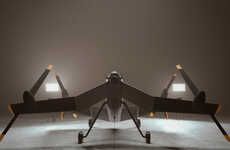
The 'Bug' Drone Can Withstand Heavy Winds Despite Its Tiny Frame
Rahul Kalvapalle — January 15, 2021 — Tech
UAVTEK, a British drone company owned by military veterans, has developed prototypes of an innovative military drone that is designed to be able to withstand rugged aerial conditions despite its exceptionally compact size.
Created as part of a partnership with BAE Systems, the Bug nano drone weighs in at a paltry 196 grams. However, this doesn't stop it from attaining a top speed of 80 km/h whilst withstanding winds of up to 80 km/h. The drone is more than capable of transmitting imagery back to base, making it an excellent tactical and reconnaissance tool for an array of military situations.
Currently in prototype stages, future iterations of this military drone are set to be upgraded with high-tech sensors and expanded features, delivering significant tactical benefit to British forces.
Created as part of a partnership with BAE Systems, the Bug nano drone weighs in at a paltry 196 grams. However, this doesn't stop it from attaining a top speed of 80 km/h whilst withstanding winds of up to 80 km/h. The drone is more than capable of transmitting imagery back to base, making it an excellent tactical and reconnaissance tool for an array of military situations.
Currently in prototype stages, future iterations of this military drone are set to be upgraded with high-tech sensors and expanded features, delivering significant tactical benefit to British forces.
Trend Themes
1. Miniaturized Military Drones - Advancements in creating smaller and lighter military drones are leading to better performance and improved tactical capabilities.
2. Ruggedized Drones - The development of military drones that can withstand harsh weather and environmental conditions is enabling more effective tactical and reconnaissance operations.
3. High-tech Sensor Integration - The integration of advanced sensors and expanded features in military drones is improving situational awareness and decision-making capabilities on the battlefield.
Industry Implications
1. Military and Defense - The military and defense industry has the potential to benefit greatly from the continued development and deployment of miniaturized and ruggedized drones with advanced sensor capabilities.
2. Technology and Electronics - The technology and electronics industry can play a key role in the development of next-generation military drone technology through the creation of high-performance sensors and other components.
3. Aerospace and Aviation - The aerospace and aviation industry can contribute to the development of military drone technology by providing expertise in lightweight and aerodynamic engineering, as well as aviation regulations and safety standards.
4.4
Score
Popularity
Activity
Freshness























